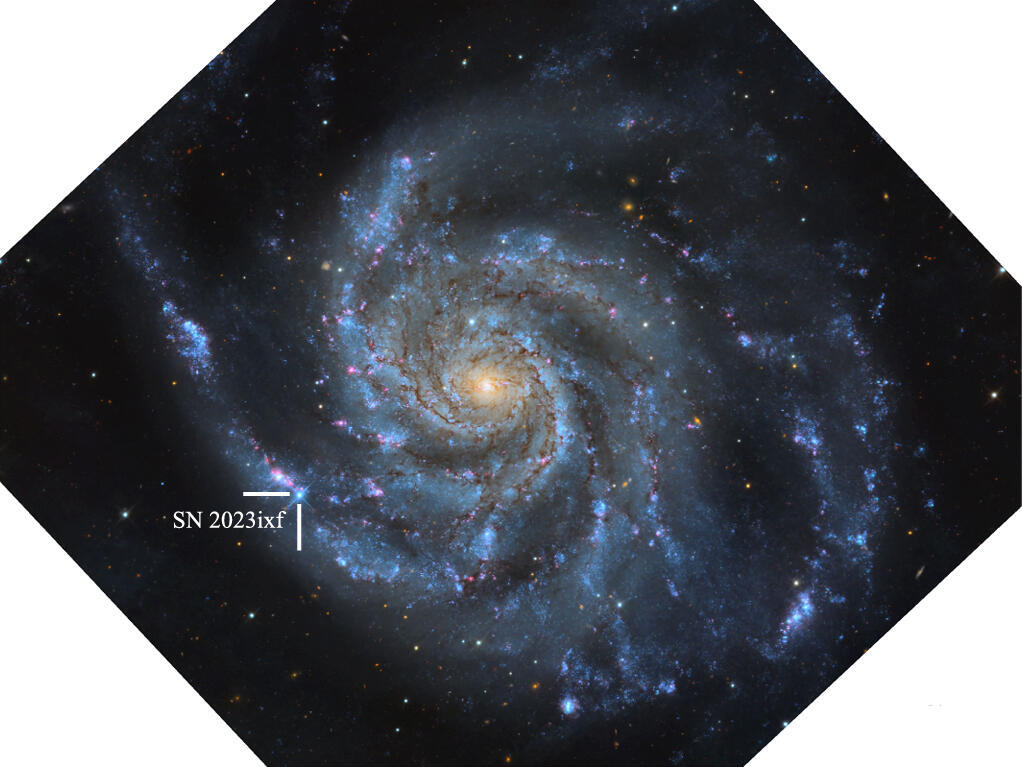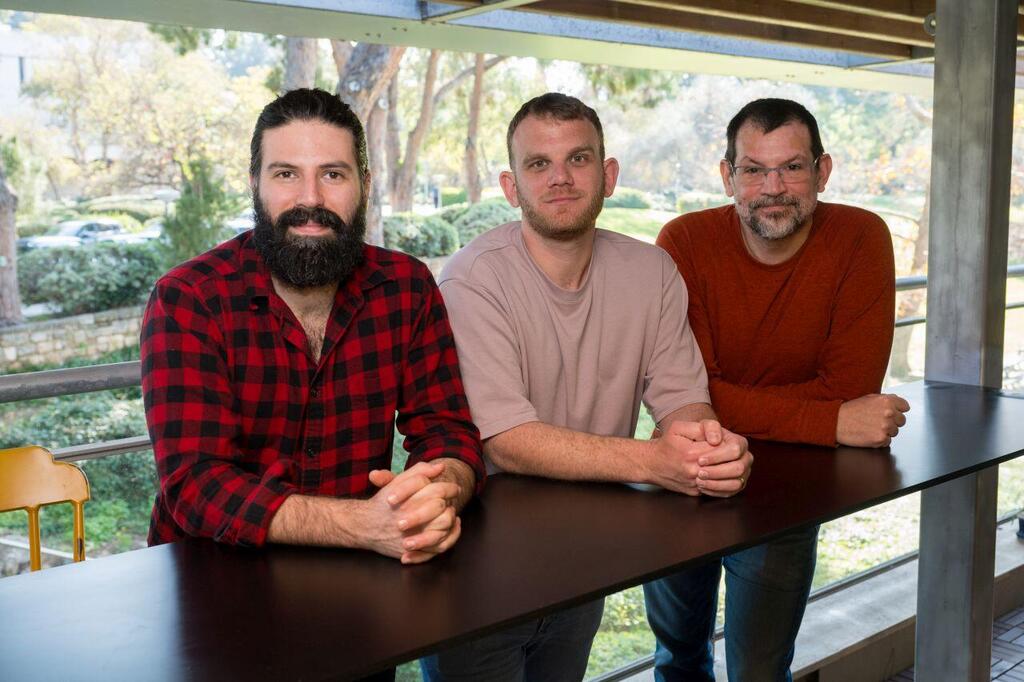Getting your Trinity Audio player ready...
In a new study published in Nature this week, scientists at the Weizmann Institute of Science have mapped an exploding star with unprecedented detail, capturing data from both the explosion and the star's final years, offering new insights into the processes leading to supernovae.
Supernovae, or exploding stars, have fascinated humanity for millennia, long before the invention of the telescope. While we now understand that these explosions, shining with the intensity of a hundred million suns, are the source of life's building blocks in our universe, the conditions causing a star to self-implode remain unclear. The main reason is the unpredictability of supernovae, leaving scientists to study them post-factum.
2 View gallery


The brilliant flash is Supernova SN 2023ixf in the Pinwheel Galaxy, based on telescopic data received on May 20, 21 and 22
(Photo: Travis Dew, Arizona University (Hosseinzadeh et al. 2023))
Supernovae were once considered a rare phenomenon, with the last one observed in our galaxy exploding about 400 years ago, leaving our ancestors marveling at a sudden new blaze in the sky without explanation.
Innovations in telescopic technology now allow us to witness explosions not only within our own galaxy but also in distant ones, gathering data that was unimaginable until recently.
Yet, according to researchers from the Weizmann Institute of Science, the primary challenge in studying supernovae remains: astrophysicists must act like space archaeologists, arriving at the explosion site post-event to collect remnants from the debris.
"This is part of what makes the supernova we observed so special," says doctoral student Erez Zimmerman from Prof. Avishay Gal-Yam's group in the Department of Particle Physics and Astrophysics, "It's the first time we've observed, in ultraviolet radiation - where most of the light is emitted - the collision between the material expelled by the supernova and the material from the star's envelope."
Scientists at the Institute are the first to admit luck was on their side: Prof. Gal-Yam's group requested observation time on the Hubble Space Telescope - one of NASA's oldest, largest, and most advanced space telescopes - hoping to catch a supernova and gather data on the ultraviolet radiation emitted from the explosion and its surrounding material.
To their delight, they secured a front-row seat to the closest supernova to Earth in decades: a red supergiant star that exploded in the Pinwheel Galaxy (also known as "Messier 101"), neighboring the Milky Way.
The Israeli scientists acted swiftly and astutely to collect valuable data in real time. The indication of the supernova arrived on a Saturday evening, and they knew waiting until Monday - the beginning of the week in the United States - would mean losing precious information. Adding to the drama, Sunday was the wedding day of Zimmerman, who led the research alongside doctoral student Ido Irani, also from Prof. Gal-Yam's group.
2 View gallery


Ido Irani, Erez Zimmerman and Prof. Avishay Gal-Yam
(Photo: Weizmann Institute of Science)
The scientists successfully raced against time, conducting telescopic measurements, analyzing and calculating the required information, and delivering the data to their NASA colleagues within hours. This allowed the Hubble Space Telescope, typically operated with great deliberation, to redirect its gaze to the explosion as it unfolded.
"It's rare in scientific work for research to be so time-sensitive," says Prof. Gal-Yam. "Most scientific projects don't happen on a Friday night, but when the opportunity arose, we had no choice but to rise to the challenge."
Ultimately, not only did the researchers manage to provide NASA with the measurements in time for the Hubble Space Telescope to collect the necessary data due to its relative proximity to the explosion site, but it also emerged that Hubble had observed this galaxy many times before.
The team, in collaboration with other research groups, turned to NASA's archives and extracted pre-explosion images of the star when it was "just" a red supergiant on the verge of death. These efforts allowed the scientists to create the most detailed portrait ever of a supernova, bridging its final years and its demise.
Analysis of ultraviolet light data from the space telescope, confirmed by additional satellites, enabled scientists to measure the amount of material expelled from the star during the explosion.
"Comparing the star's mass post-explosion, measured from the blast itself, to its mass at the beginning of its life, leaves a significant remainder," says Irani. "This gap strongly suggests the supernova left behind a black hole, likely absorbing the missing mass."
Prof. Gal-Yam added, "Stars behave unpredictably at the end of their lives, becoming unstable, and we usually can't be sure what complex processes occurred in their cores because we start investigating only after their death - when most information is already lost. Given the star's proximity and the quality of data collected, this research offers a rare chance to better understand the mechanisms leading to a star's demise and the emergence of something entirely new."
What happens to the material that made up that former red supergiant? Weizmann Institute scientists say we may never know, but the discussed supernova is still in its final stages, and new data continues to be collected, so this research - and future studies - might help answer one of our central questions about existence: how did we get here?


